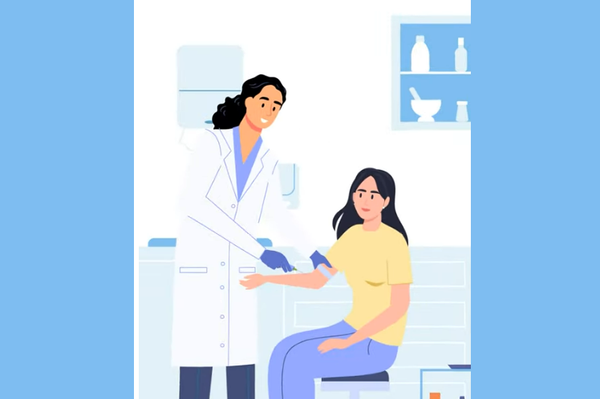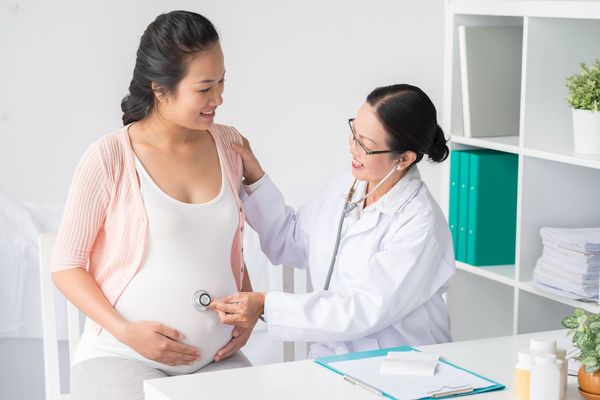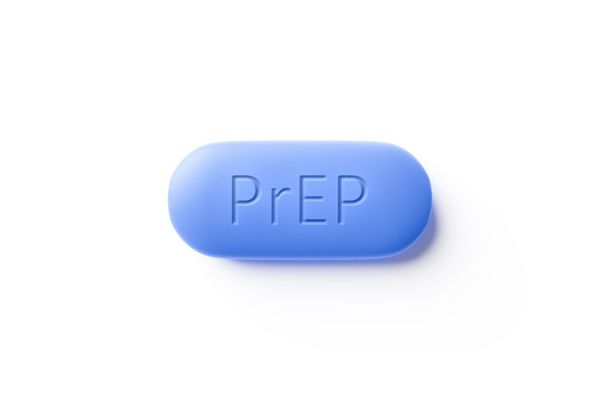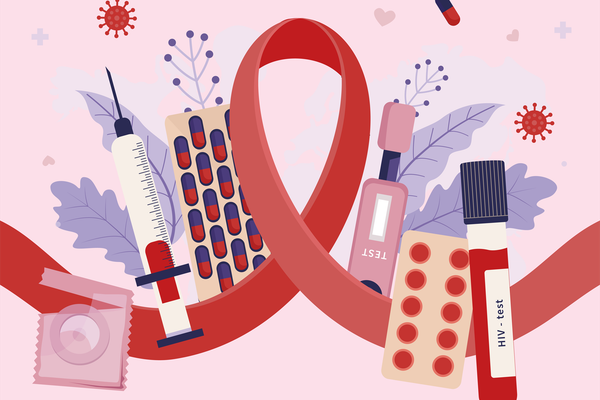When it comes to HIV, there’s positive news: Infection rates have been declining since 2017, and there’s hope for the development of an HIV vaccine. But there’s still much progress to be made in the transgender community, which is heavily affected by the disease.
A study done by the Centers for Disease Control and Prevention (CDC) highlights the unequal impact of HIV on the transgender community in the United States. HIV prevalence among transgender women is 14.1%, 3.2% for transgender men, and 9.2% for transgender people overall. In comparison, it’s estimated that the HIV rate for U.S. adults overall is less than 0.5%.
Worldwide, the numbers are even more startling: One analysis across 15 countries found that transgender women are 49 times more likely to have HIV compared to the general population.
Factors that increase the risk of HIV for transgender women
Why is the risk so high for transgender women?
“When we think about risk factors, we often think about individual-level risk,” said Asa Radix, M.D., Ph.D., MPH, senior director of research and education at Callen-Lorde Community Health Center in New York City, clinical professor at NYU Langone and a clinical ambassador for the CDC. “I think it’s really important to reframe that a little bit when we’re talking about HIV because this is often related to structural issues, not only individual-level issues.”
Structural inequalities are when policies keep certain groups of people from having equal access to resources. The statistics are overwhelming when it comes to the results of these inequalities for the transgender community in the U.S.:
- Almost 3 out of 10 trans women live in poverty, making less than $14,000 a year
- 3 out of 10 trans people say they have experienced homelessness in their lifetime
- Almost half of transgender people have been sexually assaulted, according to the National Sexual Violence Resouce Center.
- More than 1 in 4 trans people have lost a job due to bias, according to the National Center for Transgender Equality, and 3 out of 4 say they have experienced workplace discrimination.
The impact of these structural issues are even greater on Black and Hispanic people. One CDC study of seven U.S. cities found that 62% of Black trans women and 35% of Hispanic/Latina trans women surveyed had HIV—compared to 17% of white trans women.
“If you think about all of these social determinants of health, it’s very clear that if you are homeless without an education, without a possibility of employment or a house to live in, your risk for HIV is going to increase,” Radix said.
Read: Social Determinants of Health, Health Disparities and Health Equity >>
With fewer options for jobs, Radix explained, trans women may turn to sex work to make ends meet, skyrocketing their risk of HIV exposure. One study published in 2023 found that 41.8% of trans women reported having engaged in sex work, saying they were motivated to do so for “better pay” and being unable to “get a job due to gender discrimination.”
On top of structural inequalities, transgender women often experience high levels of family rejection, stigma and discrimination, which can lead to high levels of anxiety and depression. Radix explained that people may try to alleviate their anxiety and depression by engaging in risky behaviors, such as injection drug use or sharing needles. All of these challenges can result in poorer health outcomes by themselves, and when individual-level and structural inequalities are combined, the negative effects are compounded.
Access to healthcare is key to preventing HIV
With these higher risk factors, access to healthcare is extremely important. But 24 states currently restrict gender-affirming care in some way, lawmakers in at least 10 states are proposing to restrict transgender access to public services, and it’s legal in several states for healthcare providers to refuse to treat LGBTQ patients. All of this makes it difficult for trans people to find healthcare providers (HCPs) they can have open and honest dialogue with — or even disclose that they are trans in the first place.
The 2022 U.S. Trans Survey found that almost 1 in 4 respondents from the trans community did not see a doctor when they needed to in the year prior to the survey because they feared being mistreated. And of those who did see doctors, almost half reported having a bad experience because they were transgender, including being refused healthcare, being misgendered, or having a provider be verbally or physically abusive.
Read: What’s Sexual Orientation Got to Do With It? LGBTQ People Face Discrimination in Healthcare >>
Pre-exposure prophylaxis, also called PrEP, is medication that reduces the risk of getting HIV from sex by 99%. And it reduces HIV from needle exposure by 74%. But in order to be effective, it must be taken consistently. PrEP is only available with a prescription from an HCP. In a yet-to-be-published study Radix is working on, preliminary findings show that less than 15% of trans women are currently on PrEP. For trans men, the number drops to less than 6%.
“Lack of access to healthcare — which can be lack of insurance because they didn’t have a job, or feeling uncomfortable walking into a provider’s office — means that you don’t get that access to PrEP,” Radix said. “We know that PrEP is probably the most important intervention to reduce HIV, but we are not at a place right now where you can just walk into a store and get PrEP off the shelf.”
Even when transgender people do go to their healthcare provider, the burden may be on them to ask about PrEP rather than their provider initiating the conversation, which can be another roadblock.
Watch: No HIV for Me: Protect Yourself from HIV with PrEP and PEP >>
“Some providers get very uncomfortable asking trans people about their sexual health because they don’t often know what words to use, or they make many assumptions about who people’s sexual partners are,” Radix said. “We see that a lot with transmasculine folk. People just assume that their partners are going to be cisgender women [people whose gender identity matches their sex assigned at birth]. They don’t think to ask them if they are having sex with someone who has a penis, which would put them at higher risk [of HIV].”
While there have been a wealth of studies looking overall at the LGBTQ community and HIV, they often present an incomplete picture because of missing data or misconceptions about gender, sex and identity.
At their clinic, for example, Radix says they found an HIV prevalence of 2.8% among transmasculine people. But when they looked specifically at transgender men who have sex with cisgender men, the HIV infection rate jumped to 11%.
Finding a provider
“Everyone needs healthcare — not just when you’re sick,” Radix said. If you are transgender and in need of an HCP, the Gay and Lesbian Medical Association has LGBTQ+-friendly provider directory as does the World Professional Association for Transgender Health. You can also ask for recommendations from local LGBTQ community centers or clinics.
Find a provider you’re comfortable being honest with about your sexual health and sexual history and asking about HIV testing, preventive and treatment options, and other routine tests for your overall health.
Resources
Gay and Lesbian Medical Association LGBTQ+-Friendly Healthcare Directory
World Professional Association for Transgender Health Provider Search
This educational resource was created with support from Merck.
- How Does HIV Affect Women—Now and in the Future ... ›
- Do Transgender Women Experience Menopause? ›
- PrEP Is for Women, Too ›





